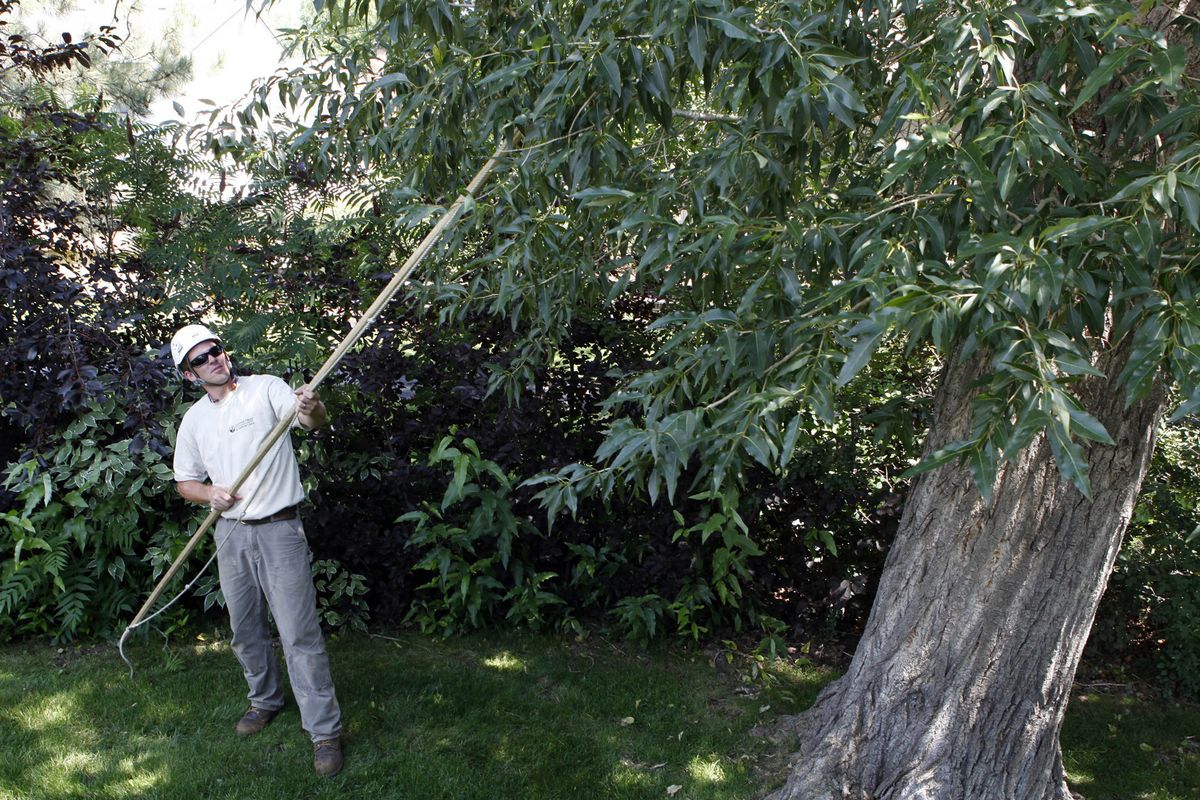Arborists say fall is perfect time to winterize trees

It’s a rite of fall: Green leaves turn red and gold and then fall as trees prepare themselves for winter. It’s an excellent time to give your trees a good once-over.
Are there dead branches or limbs, or large areas of fungus? Is the tree leaning? Are the roots well-grounded?
A local arborist can determine whether there are problems that require immediate action.
Dead branches – or the entire tree – can come down in a storm. Be proactive, arborists say.
“It’s a lot cheaper to have the limb cut off than to fix your roof,” says Jonathan Hammond, owner of Alpine Tree and Shrub Care in Denver.
And it’s not just the dead limbs.
“Pruning your tree can make it better able to withstand the extra weight of ice and snow,” the Tree Care Industry Association says on its website Treecaretips.com. “Branches can be thinned to reduce their surface area and wind resistance.”
The U.S. Forest Service has a guide for pruning trees, including do’s and don’ts and when trees should be pruned.
But heights and chain saws can be a dangerous combination for amateurs. Sharon Lilly, director of education for the International Society of Arboriculture, says people should call a certified arborist for pruning large trees.
“Homeowners can do the smaller and lower stuff themselves,” she says.
There are other things that can be done to help trees withstand harsh winters.
Give them a “good, long, slow drink,” Lilly says.
All trees should get that fall watering, but especially young ones planted in the last three years, and evergreens, she says: “You might even do that more than once going into the winter months.”
Watering should be done before the ground freezes so the water can reach the roots.
A layer of organic mulch around the tree can help maintain moisture. The mulch also insulates and protects the upper roots, says Tchukki Andersen, staff arborist at the Tree Care Industry Association, and it will help replenish nutrients in the soil.
Think of it as an “early spring snack” for the trees when the area warms up, she says.
Arborists caution against placing mulch right up against the tree trunk. Think of shaping it like a saucer instead of a cone, says Vermont Master Gardener Ann Sherman: The mulched area should be as wide as possible to cover the underground roots but no deeper than 2 to 4 inches.
“The bigger the mulch area, the better the benefit,” says Lilly.
Fertilizing trees isn’t necessary unless the soil is deficient in certain nutrients. Andersen says that if a tree is unhealthy, adding fertilizer will prompt it to put out new growth at the expense of its defense systems.
“Fertilizer is touted as a cure-all or a preventative,” she says. “It’s basically a substance that brings back a more natural balance of the soil.”
For branches that have a weak union, or crotch, cabling is sometimes recommended. Lilly says that should be done by a professional, because there are “a lot of ways to do more harm than good.”
A professional also can give you guidance on staking a tree to support it, says Andersen.
In areas where it snows a lot, small, fragile trees can be protected with a support teepee, essentially a tripod of plywood to prevent the snow from accumulating, she says. Also, some smaller trees can be winterized by temporarily tying some of the branches together.
“It’s almost an engineering exercise, looking at your trees and what the potential loads are going to be and how the tree is going to respond,” Andersen says.
Hammond says that load can be heaviest during early season snowstorms, when trees still have their leaves. The leaves act like a net to catch the snow.
“If we get an early October snow, it can be really devastating to the trees,” he says.
Just as snow is a fixture of winter, so is the salt used to melt it on sidewalks and streets. And that can be harmful to trees.
“You will see the result of salt in the spring,” Andersen says. “If they leaf out, they will leaf out with brown leaves that will seem burnt.”
If you do get salt damage, Lilly says, the best thing is to “water and water it and wash it through the soil.”
And there’s one more thing: Once the leaves fall, clean up your yard, she says. If the tree was infected with a fungus, the spores can survive the winter and re-infect the tree in the spring.